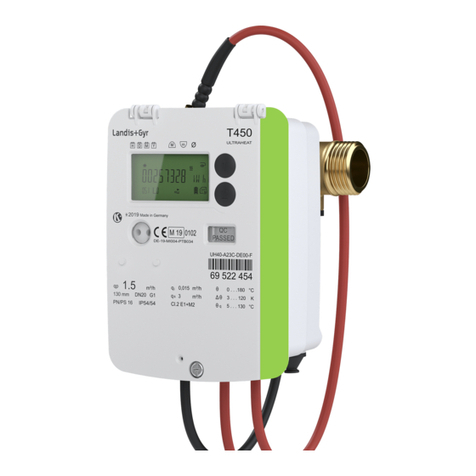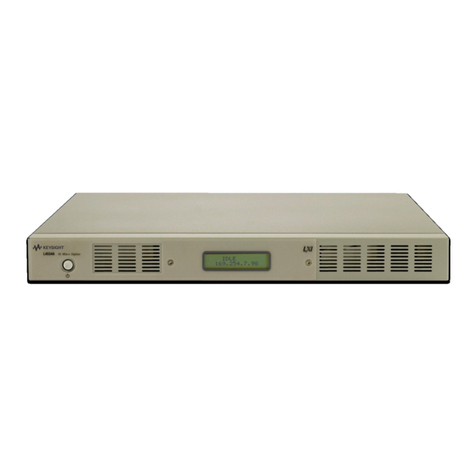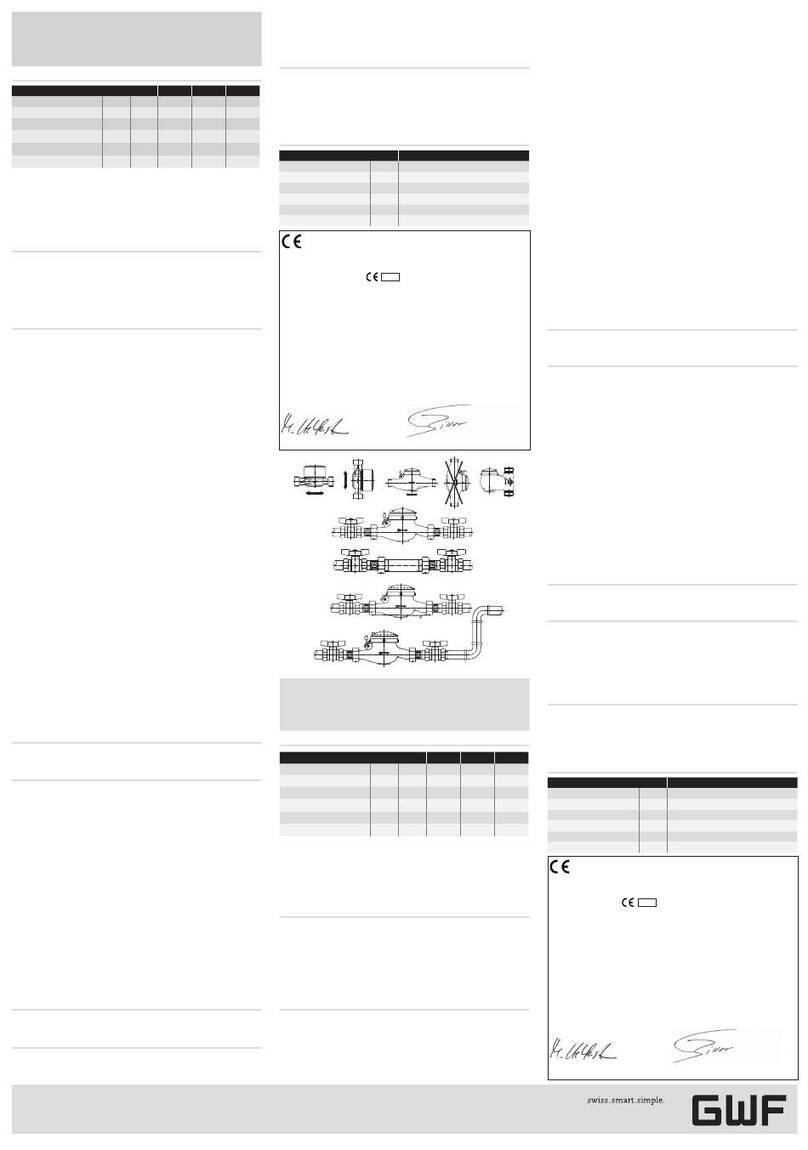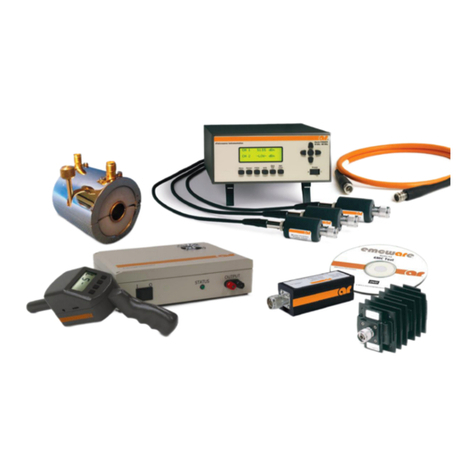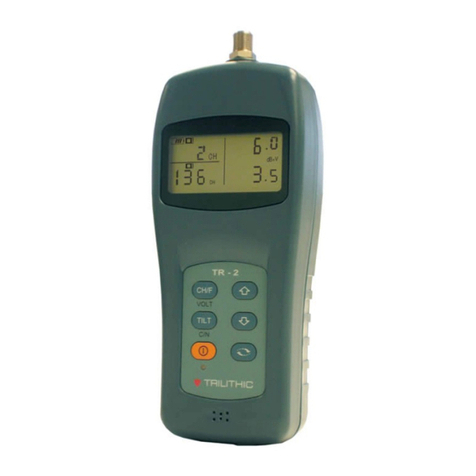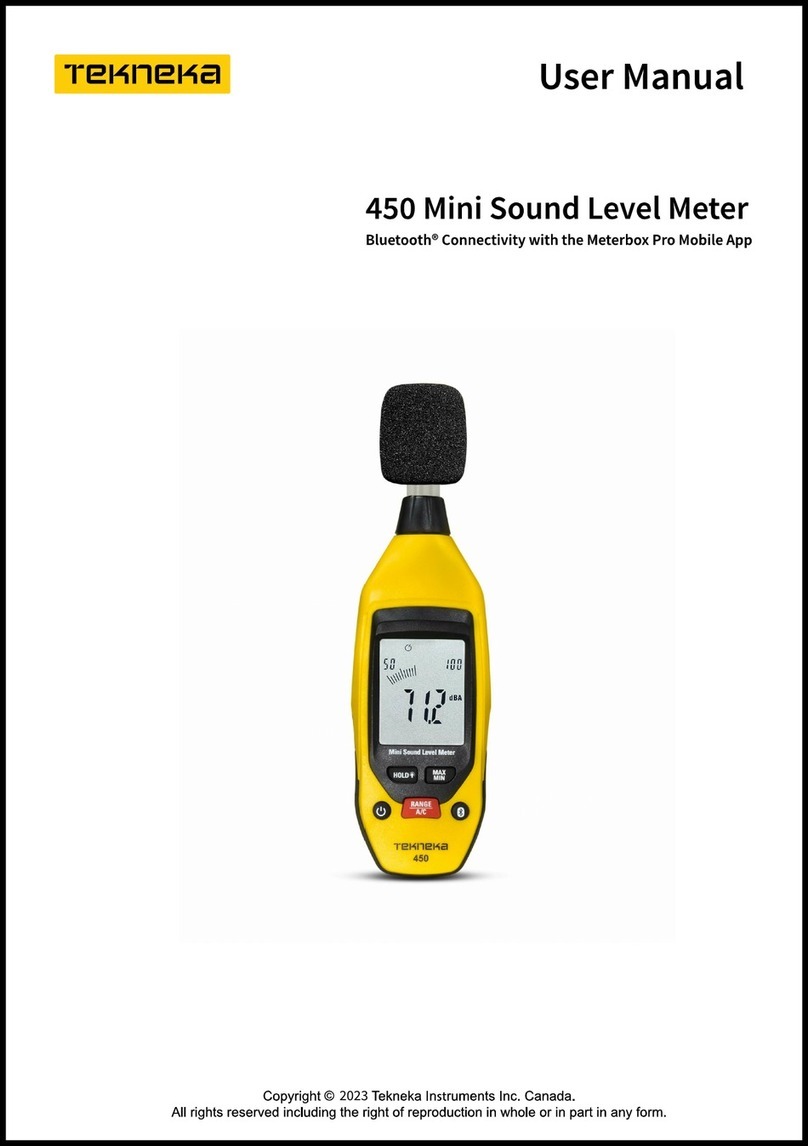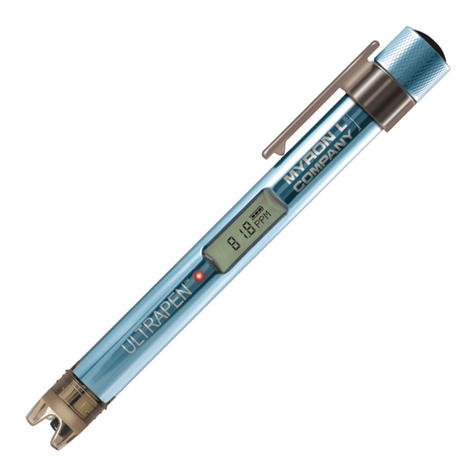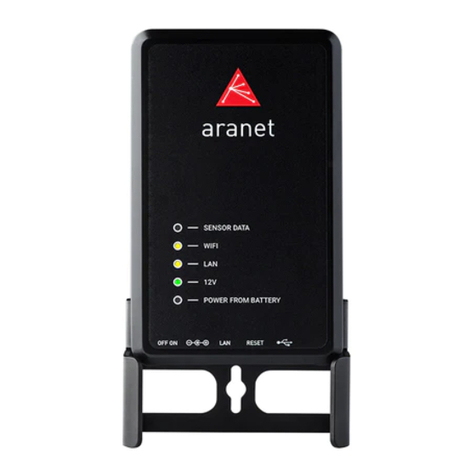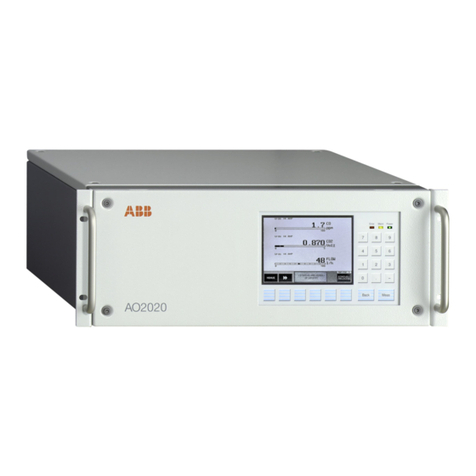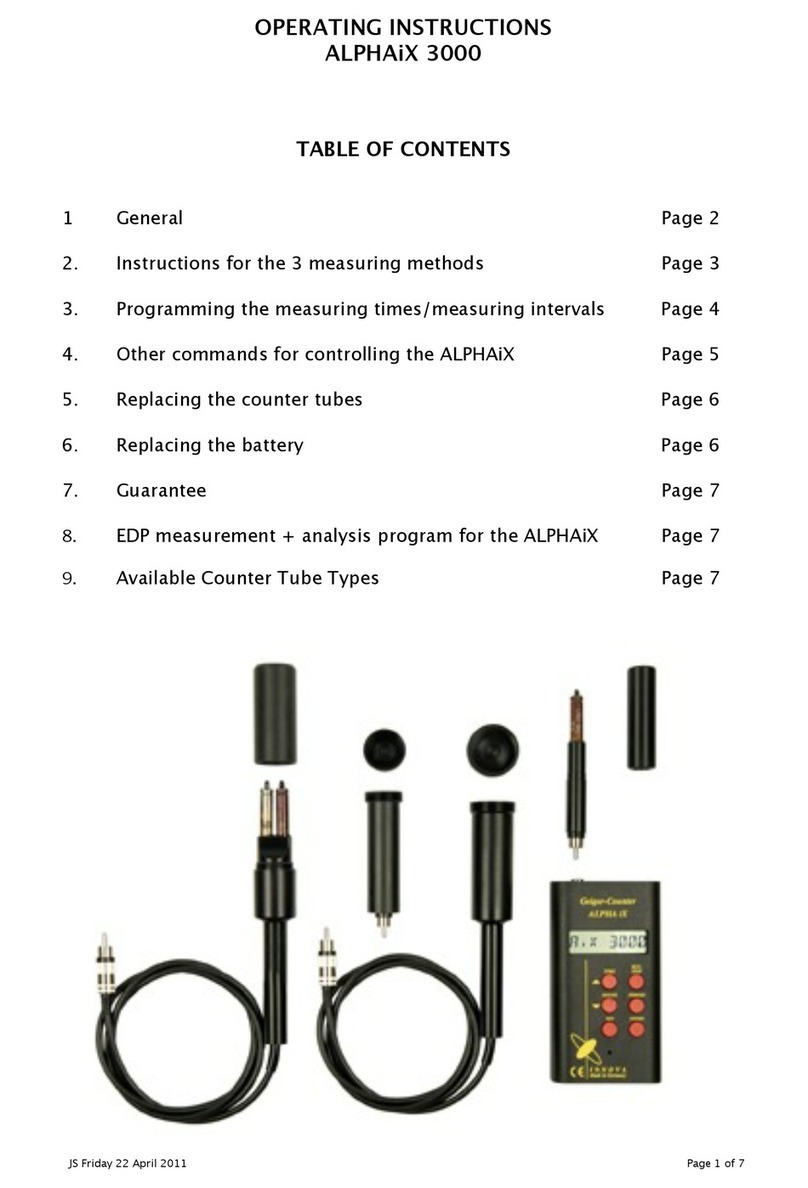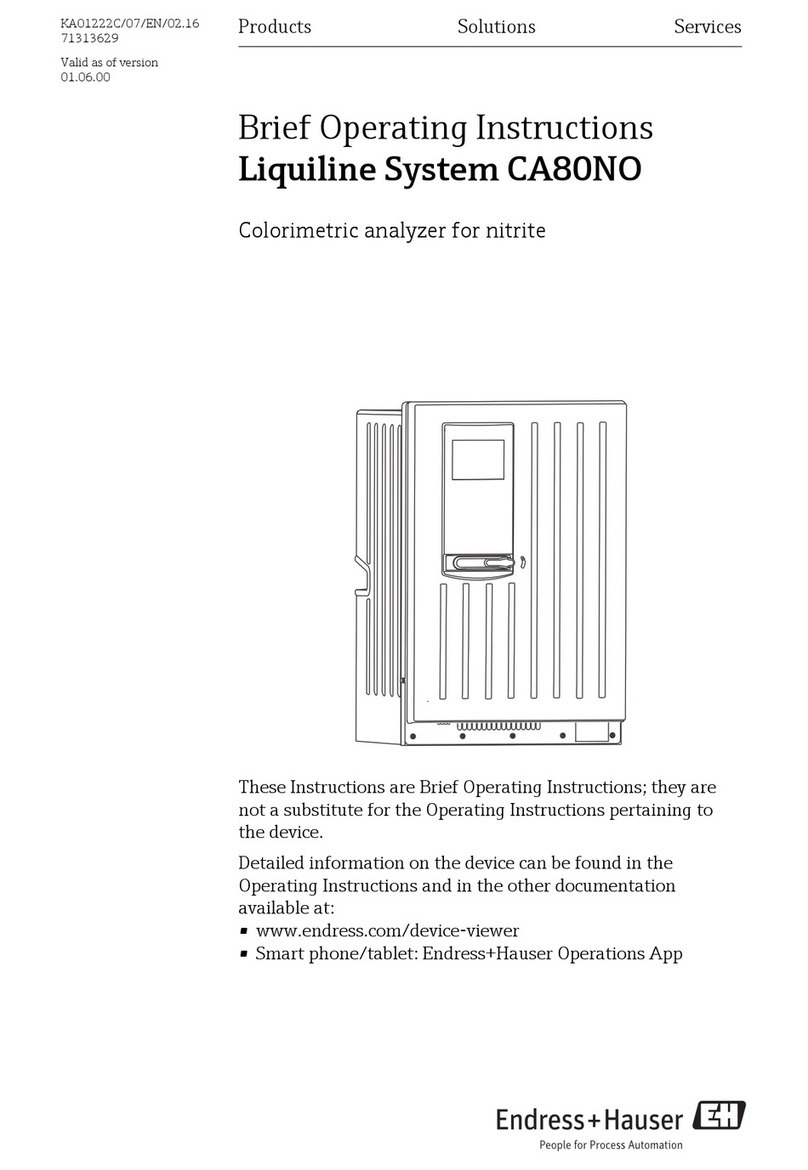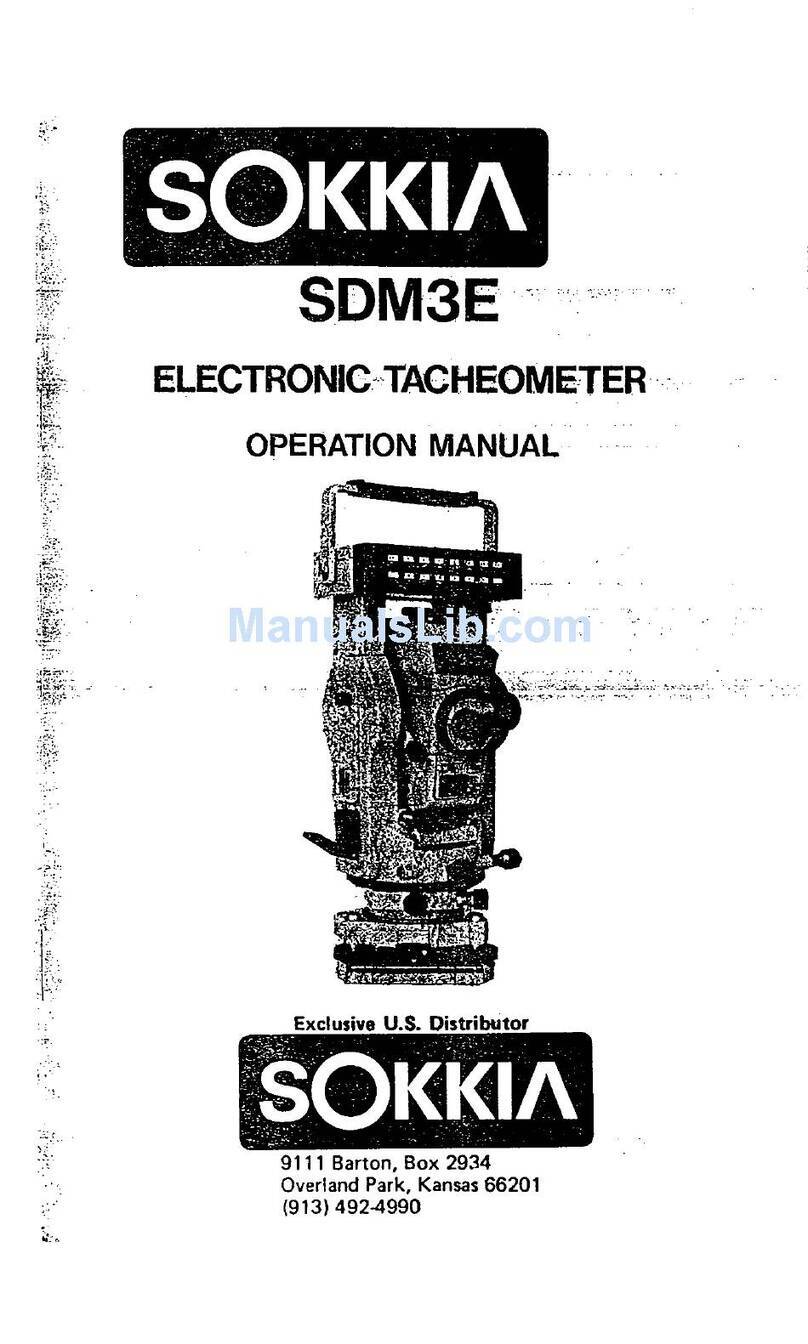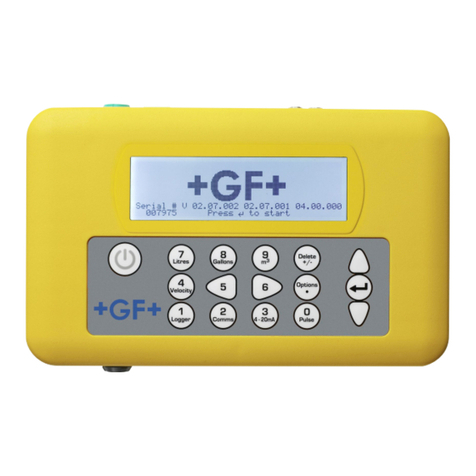SEAWARD Electronic Rigel 266 Plus User manual

Rigel 266 Plus
Compact Electrical Medical Safety Analyser
Instruction Manual
350A555 Issue 1.0
February 2006
© 2006 Seaward Electronic Ltd.
Issue 1.0


1
Limited Warranty & Limitation of Liability
Rigel Medical, part of SEAWARD Electronic Limited guarantees this product for a period of 1 year. The period
of warranty will be effective at the day of delivery.
© Copyright 2006
All rights reserved. Nothing from this edition may be multiplied, or made public in any form or manner, either
electronically, mechanically, by photocopying, recording, or in any manner, without prior written consent from
SEAWARD Electronic Limited. This also applies to accompanying drawings and diagrams.
Due to a policy of continuous development SEAWARD Electronic Limited reserves the right to alter the
equipment specification and description outlined in this publication without prior notice and no part of this
publication shall be deemed to be part of any contract for the equipment unless specifically referred to as an
inclusion within such contract.

2
Table of Contents
Declaration of Conformity..........................................................4
Before Starting...........................................................................5
Safety.........................................................................................6
CHAPTER 1 INTRODUCING THE ANALYSER............ 8
Introduction................................................................................8
Your compact medical safety analyser .....................................9
The Top Panel.................................................................9
.................................................................................................10
The Keyboard ..........................................................................10
Definitions................................................................................11
CHAPTER 2 USING THE ANALYSER........................ 12
Introduction..............................................................................12
Controls .........................................................................12
Display...........................................................................12
Connecting the Analyser .........................................................14
Performing a Test ....................................................................16
After a Test....................................................................16
Abort Actions .................................................................16
Printing Results .......................................................................16
Equipment Type ......................................................................17
Earth Continuity Tests .............................................................17
Insulation Tests .......................................................................18
Powered Tests.........................................................................20
Load Test.................................................................................20
Earth Leakage Test .................................................................22
Earth Leakage, normal condition ..................................23
Earth Leakage, single fault, supply open ......................23
Enclosure Leakage Test..........................................................24
Enclosure Leakage, normal condition...........................25
Enclosure Leakage, single fault, supply open ..............25
Enclosure Leakage, single fault, earth open.................26
Patient Leakage - Applied Part To Earth.................................27
Patient Leakage, normal condition................................28
Patient Leakage, single fault, supply open ...................28
Patient Leakage, single fault, earth open......................29
Patient Leakage – F-Type .......................................................29
Patient Leakage – Mains on SIP/SOP ....................................31
Patient Auxiliary Current..........................................................34

3
Patient Auxiliary, normal condition................................ 36
Patient Auxiliary, single fault, supply open.................... 36
Patient Auxiliary, single fault, earth open...................... 37
IEC Lead Polarity Test ............................................................ 37
CHAPTER 3 MANUAL MODE .................................... 38
Operation:................................................................................ 38
CHAPTER 4 TIPS & TROUBLESHOOTING............... 41
Power On Self tests:................................................................ 41
Safety Tests During Operation................................................ 42
Temperature monitoring .......................................................... 43
Interfacing................................................................................ 44
CHAPTER 5 MAINTAINING THE ANALYSER........ 46
Cleaning the Analyser ............................................................. 46
User Maintenance ................................................................... 46
CHAPTER 6 ACCESSORIES ..................................... 48
Standard Accessories ............................................................. 48
Optional Accessories............................................................... 48
CHAPTER 7 SPECIFICATIONS.................................. 49
AC Earth Bond Test ................................................................ 49
Insulation Test ......................................................................... 49
Earth Leakage Test ................................................................. 49
Enclosure Leakage Test ......................................................... 49
Patient Leakage Test .............................................................. 49
Patient Auxiliary Test............................................................... 50
Patient SIP/SOP Test.............................................................. 50
Patient F-Type Test................................................................. 50
Load Test................................................................................ 50
IEC Lead Test ......................................................................... 50
Mechanical .............................................................................. 50
Environmental ......................................................................... 51
APPENDIX .................................................................... 52
Test Limits ............................................................................... 52
BS EN 60601 (IEC601) Leakage .................................. 52
Earth Bond and Insulation Tests................................... 53
Earth Bond Continuity Limits ................................................... 53
In-Service Insulation Limits ..................................................... 53

4
Declaration of Conformity
for the
Rigel 266 Plus Electrical Medical Safety Analyser
Manufactured by:
Seaward Electronic Ltd, Bracken Hill, South West Industrial Estate
Peterlee, County Durham, SR8 2SW, England
Millennium Statement
This product is Millennium compliant, and conforms fully to the document BSI DISC PD2000-1.
Statement of Conformity
Based on test results using appropriate standards, the product conforms with Electromagnetic Compatibility
Directive 89/336/EEC and Low Voltage Directive 73/23/EEC
Standards used:
EN 60601-1 (1990) Medical Electrical Equipment. General Requirements for Safety
EN 61010-1 (1993) Safety Requirements for Electrical Equipment for Measurement, Control, and Laboratory
Use
EN 50081-1 (1992) Electromagnetic Compatibility. Generic Emission Standard: EN55022 Class B
EN 50082-1 (1992) Electromagnetic Compatibility. Generic Immunity Standard: IEC1000-4-2, -4-3, -4-4, -4-5
The tests have been performed in a typical configuration.
This Conformity is indicated by the symbol , i.e. “Conformité Européenne”

Before Starting
5
Before Starting
Upon receipt of your Rigel-266 Plus Analyser:-
1. Check that all the component parts are present:-
•Rigel 266 plus Analyser
•Mains lead
•Earth Bond lead
•Applied Parts Lead
•Applied Parts Adaptors (5 Off) & Crocodile Clip
•Instruction Manual
•Carrying Case
•Calibration Certificate
2. Read the operating instructions fully before conducting any tests.
3. Contact Rigel Medical if you require training on this Analyser or any other Rigel Medical product.
Courses can be arranged at Rigel Medical, or at customer premises.
4. Rigel Medical can be contacted at:
P/A Seaward Electronic Ltd
Bracken Hill
South West Industrial Estate
Peterlee, Co. Durham
SR8 2SW, England
Tel : +44 (0)191 587 8730
Fax: +44 (0)191 586 0227
www.rigelmedical.com

Safety
6
Safety
Note
Please read the following Safety Instructions before use!
Safety Precautions
The manual contains specific warning and caution statements where they apply.
A Warning will identify the conditions and actions that pose hazard(s) to the user.
A Caution will identify the conditions and actions that may damage the Analyser.
Symbols used within this manual and on the Analyser are shown below:
Risk of electric shock
Warning of potential
hazard
Conformité Européenne
Use of the instrument in a manner not specified may impair safety. Read the following safety information
carefully before attempting to operate the instrument.
Warning
Due to the potential hazards associated with any electrical circuit it is important that the user is
familiar with the instructions covering the capabilities and operation of this instrument. The
user should ensure that all reasonable safety precautions are followed and if any doubt exists
should seek advice before proceeding.
This product is designed for use by suitably trained competent personnel and should be
operated strictly in accordance with the instructions supplied.
Failure to comply with these instructions may expose the user to electrical hazard
This Analyser performs a number of electrical tests that involve high voltages and high currents. Never touch
the appliance being tested, or the test leads, whilst a test is in progress.
Always check all test leads for signs of damage prior to use. Never use damaged or defective leads.
Always ensure the mains supply to the Analyser provides an adequate earth.
This manual contains information and warnings that must be heeded to ensure user safety during operation. It

Safety
7
is essential that this manual is read fully before proceeding with any tests.
Should the Analyser behave abnormally do not continue with the testing. Disconnect immediately and
contact Rigel Medical for servicing (see Chapter 4 - Maintaining the Analyser).

Introduction
8
Chapter 1 Introducing the Analyser
Introduction
The Rigel-266 plus Electrical Medical Safety Analyser (EMSA) is a powerful tool to assist in the analysis of the
safety of portable electrical and electronic medical equipment. A range of tests are provided, with innovative
features to aid difficult test situations, which allow testing of a wide variety of equipment.
The Analyser combines state of the art testability with the following innovative features:-
•Truly portable analyser
•Accurate earth bond under all test situations
•Accurate leakage measurements
•Connects to printer to print results
•Large, easy to read digital display
•Easy test selection
•Full Manual control option
•Semi Automatic Test option

Your compact medical safety analyser
9
Your compact medical safety analyser
Item Number Part
1 Rigel-266 plus EMSA
2 Carrying case
3 Earth Bond Lead
4 Power cord - Integral with the Rigel 266 plus
5 Applied Part Lead Set (including Applied
Parts adaptors pack)
6 Manual
The Top Panel

10
Item Number Part
1 EUT Mains Socket
2 Applied Parts Socket
3 Printer Interface
4 230V Mains Socket/Mains Input
5 IEC Lead Connector
6 Earth Bond Socket
7 SIP/SOP Socket
The Keyboard
Item Part
1 Rotary Test Selection Switch
2 Semiautomatic Mode - Up Down Cursor keys
Manual Mode [UP] – SFC Neutral Open, [DOWN] – SFC
Earth Open, [DOWN] – SFC Mains on AP
3 Semiautomatic Mode - SELECT button
Manual – AC-DC. Ac-Only & DC-Only Parameter
4 START / STOP button – start and stop tests
5 Applied Part Selection 1 – 5
6 Applied Part ALL Selection
7 Manual [DIAMOND] – Mains Normal / Reverse

Definitions
11
The user is provided with a custom design Liquid Crystal Display (LCD). The keyboard consists of 10 push
buttons to adjust the operating mode of the Analyser, and a larger push button to initiate tests. A rotary switch
selects the test desired.
Definitions
EMSA- Electrical Medical Safety Analyser
Rigel 266 plus
EUT- Equipment Under Test
The electrical / electronic apparatus which is the subject of testing.
IUT- Instrument Under Test Same as EUT
Applied Part - Part of the EUT (including Patient leads) that
comes into contact with a patient.
Powered Tests - The EUT is supplied with mains voltage, with measurements
being taken of power consumption, leakage currents etc.
Analyser / Tester - The Rigel 266 plus compact medical electrical safety analyser.
Un-powered Tests - The EUT is the subject of electrical tests using stimuli
generated within the Analyser. The EUT is not provided with mains power.
User - The test technician/operator using the Analyser to perform tests on a EUT.
Semiautomatic Mode - The tester performs the SFC test automatically.
Manual Mode - The User initiates the SFC tests.
Applied Part - A part of the EUT that in normal use comes into contact with a patient.
SFC - Single Fault Conditions. Neutral Open, Earth Open and Mains on AP are examples of
Single Fault Conditions.
F-Type Applied Part - An Applied Part isolated from other parts of the EUT to such a degree that under single
fault conditions the patient leakage current is not exceeded.
SIP/SOP - Signal Input/Signal Output. A part of the EUT intended to receive/deliver signal
voltages or currents to/from other equipment (eg. RS232 serial port, data port for
recording or data processing).
Type B Applied Part - Applied part complying with specified requirements for protection against electric
shock. Type B applied parts are those parts not suitable for direct cardiac application.
Type BF Applied Part - F-Type Applied Part complying with a higher degree of protection against electric shock
than type B applied parts. Type BF applied parts are those parts not suitable for direct
cardiac application.
Type CF Applied Part - F-Type Applied Part complying with a higher degree of protection against electric shock
than type BF applied parts.

Introduction
12
Chapter 2 Using the Analyser
Introduction
Controls
A rotary switch defines the basic test (or action) to be performed. The tests are arranged on the switch such that
a clockwise rotation of the switch needed to perform a normal sequence of tests.
Arrow keys ( ↑and ↓) allow for adjustment of test variables, e.g. of the test time. The Select key is used to
change the variable to be adjusted.
The large START button is used to start a Test.
Display
Test Icons
Primary Display
Secondary Display

Introduction
13
The display consists of a number of Icons to provide visual indication of the Analyser status, a primary 4 digit, 7
segment display, along with a 4 digit secondary display, and a 2 digit duration time display.
Test Icons
Indicates the test selected,
Insulation
Patient Auxiliary
Load
Polarity
Earth Continuity
Earth Leakage
Enclosure Leakage
Patient Leakage

Connecting the Analyser
14
Test in Progress Icon
Indicates test in progress with voltage warning.
Low Voltage
High Voltage
Applying Mains Power
Test Duration Counter
Indicates the duration of the test. This will count down to zero. When the counter reaches zero. The test counter
can be set to unlimited test duration (indicated by “UL” on the display). In this instance the counter will not
count down and requires user intervention to stop the test being carried out. Note that the test duration is
indication only.
Primary Display
Indicates test result and Equipment Class and Type. For some tests there is a minimum value displayed. If the
measurement is below this “mask” value then the mask value is displayed indicating that the measured value is
below the minimum indicated by the Analyser.
Secondary Display
Before a test, this display indicates test output e.g. voltage or current specified. During a test, this display may
show the current step in the automatic test sequence. After a test, this display compares the test result with
standard limits. During the leakage tests this displays the test being carried out in the test sequence. This is
indicated as a text
mnemonic comprising of the mains power condition and the Single Fault Condition (SFC) present during the
test.
For Patient Leakage and Patient Auxiliary tests two sets of sequences are carried out – one for ac only
measurements and the other for dc only measurements as required by EN60601.
Connecting the Analyser
The Analyser must be powered by a 230V/115V supply (dependent on unit supplied). Check the rating label on
the reverse of the unit for suitable mains voltage.
The supply to the Analyser must include an earth connection (e.g. via a 3 pin plug).
When switched on, the Analyser will carry out a short self-test procedure. Ensure the EUT is unconnected to the
Analyser during the power on self-tests. During this test, all display segments will be lit to allow verification of
correct operation of the display
Once the start-up procedure of the Analyser has been completed, the Analyser is ready for operation. The
display will depend on the rotary knob position.

Connecting the Analyser
15

Performing a Test
16
Performing a Test
Tests can be performed in two different ways i.e. in Semi-automatic mode or in Manual mode.
On power up the Analyser will be in Semi-automatic test mode. The user is required to select manual test mode
from the Equipment Select rotary switch position. (Seepage 17)
For semi-automatic test mode all tests are performed in a similar way - Rotate the switch to the appropriate test.
The test time will be flashing in the top left corner. Press the arrow keys to change the test time if required.
Pressing SELECT will cause the display to move to different parameters. Use the arrow keys to change the
parameters as required.
Pressing SELECT will display the currently selected Equipment Class and Type if appropriate for that test.
Press the arrow keys to change Equipment Class and Type if required.
If an Earth Continuity test is selected, and a different test current is required, press SELECT, which will cause
the test current to flash and use the arrow keys to adjust the current as desired.
For many of the Patient Leakage tests, the user needs to select the appropriate Applied Part to be included in
the test. To do this, press one of the buttons marked AP1 to AP5, or to select all the Applied Parts press the
button marked ALL. The appropriate test will be applied to the corresponding Applied Part via the applied part
harness.
When satisfied with the test conditions, press the START button to start the test.
Manual mode testing is limited to the leakage current tests: Earth Leakage, Enclosure Leakage, Patient
Leakage, Patient Leakage – F-Type (Mains on AP), Patient Leakage SIP-SOP and Patient Auxiliary Current.
Rotate the switch to the appropriate leakage test. Select the required test conditions for EUT Mains power,
Single Fault Conditions (SFC) and AC-DC, AC-Only or DC-Only parameters.
When satisfied with the test conditions, press the START button to start the test.
Ones the power has been supplied to the EUT, the power will remain on the EUT between different positions
within the Leakage Tests.
The user has the ability to perform a number of different leakage tests within a SFC, thus reducing the power-up
and power-down cycles allowing for faster test routines.
Within all Patient Leakage measurements, different Patient Connections or Applied Parts can be selected using
the [1..5, ALL] keys without causing a power break.
After a Test
In Semi-automatic test mode, after the Analyser completes the selected test, the measured value continues to
be displayed until a button is pressed, or the rotary switch is turned to select a different test. The Secondary
display provides a comparison with standard test values. A tick or cross may also be displayed indicating the
success or failure of the test just performed.
Abort Actions
Whilst in semi-automatic mode, during a test, rotating the switch will stop the test. Whilst in manual test mode,
pressing the stop key or rotating the test to non-leakage test (Earth Continuity, Insulation, Load or IEC Lead
test) or will stop the test.
Printing Results
Rotating the switch to the START / FINISH position and pressing the START button will initiate printing the
test results to a printer connected to the printer port.

17
After this has been done, all test results are then printed until the rotary switch is placed in the START /
FINISH position again and the START button is pressed to initiate the final part of the results print-out.
The user is required to manually write such items as the appliance number, date etc, and to sign off the printout
where necessary. It is also necessary for the user to manually determine whether the EUT has passed all tests.
Equipment Type
Rotating the switch to the equipment class and type symbols enables the user to select the class and type of
the equipment to be tested. The display will indicate the current equipment type setting according to the
following list:
“I : b” – Class 1 Equipment with Type B Applied Parts.
“I :bF” – Class 1 Equipment with Type BF Applied Parts.
”I :cF” – Class 1 Equipment with Type CF Applied Parts.
“II: b” – Class 2 Equipment with Type B Applied Parts.
“II:bF” – Class 2 Equipment with Type BF Applied Parts
”II:cF” – Class 2 Equipment with Type CF Applied Parts
By pressing the up/down arrows the user can cycle between different equipment class and types that will flash
on the display. Pressing the SELECT key will cause the equipment type to stop flashing indicating that the
equipment class and type had been selected.
During tests where the equipment class and type is displayed the operator has the opportunity of changing the
equipment class and type selection by pressing the SELECT button. After pressing SELECT the arrow keys are
used to cycle between the equipment class and types. Pressing SELECT again selects the current flashing
option.
Other user settings can be set following selection of the equipment type. Following equipment selection, the
user is also given the option to indicate the pass/fail limit or test sequence number when a leakage fails a given
test limit (“PASS on”/”PASS off”).
The user is given the option to enable or disable DC-Only tests for the Patient Leakage and the Patient Auxiliary
Current tests during semi-automatic tests. The DC-Only is enabled from power up.
The user is given the option to enable the Manual Tests [SFC] for the leakage tests which includes Earth
Leakage, Enclosure Leakage, Patient Leakage, Patient Leakage - Applied Part to Earth, Patient Leakage - F-
Type, Patient Leakage - Mains on SIP/SOP and Patient Auxiliary Current.
Note: These settings are NOT stored in memory on powering down the Analyser.
Earth Continuity Tests
Switch Position ------------ Earth Bond
Test Icon Displayed ---

Insulation Tests
18
Class 1 (earthed) appliances
Plug EUT into Analyser outlet socket, connect the Earth Bond lead to the appliance metal part.
Class 2 (unearthed) appliances
This test cannot be performed as there is no earth connection to exposed conductive parts of the EUT.
Pressing the Start button in this instance will not initiate the test.
If a different test current is required, press SELECT, which will cause the selected test current to flash, and use
the arrow keys to select the appropriate current as desired.
This test is to ensure that the connection between the earth pin in the mains plug of the appliance and the metal
casing of the appliance is satisfactory and of sufficiently low resistance.
The test current is applied between the earth pin of the mains supply plug and the earth bond test lead
clip/probe.
A high current is normally used to stress the connection under fault conditions. The length of the test should be
limited to prevent damage due to overheating. Tests currents of 1A, 10A and 25A AC are available.
Caution
Prolonged use of the earth bond probe at high currents can lead to a high probe temperature. Care
should be taken to avoid touching the probe tip under these conditions. The Analyser’s internal over
temperature switch may operate with prolonged repetitive use of high test currents. In this instance an
error message will be displayed. In order to proceed with further tests the Analyser must be allowed to
cool down.
Insulation Tests
Switch Position ------------ INSUL
Test Icon Displayed ---
Warning
500V d.c. test voltage
Class 1 (earthed) appliances
Plug EUT into Analyser outlet socket
Class 2 (unearthed) appliances
Plug EUT into Analyser outlet socket, connect Earth Bond lead socket to the appliance.
Table of contents

